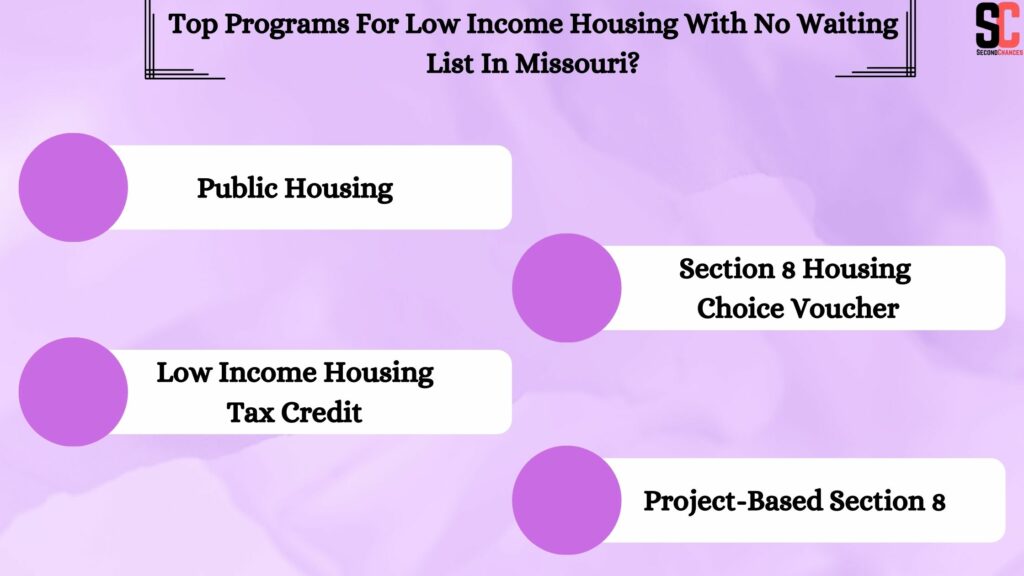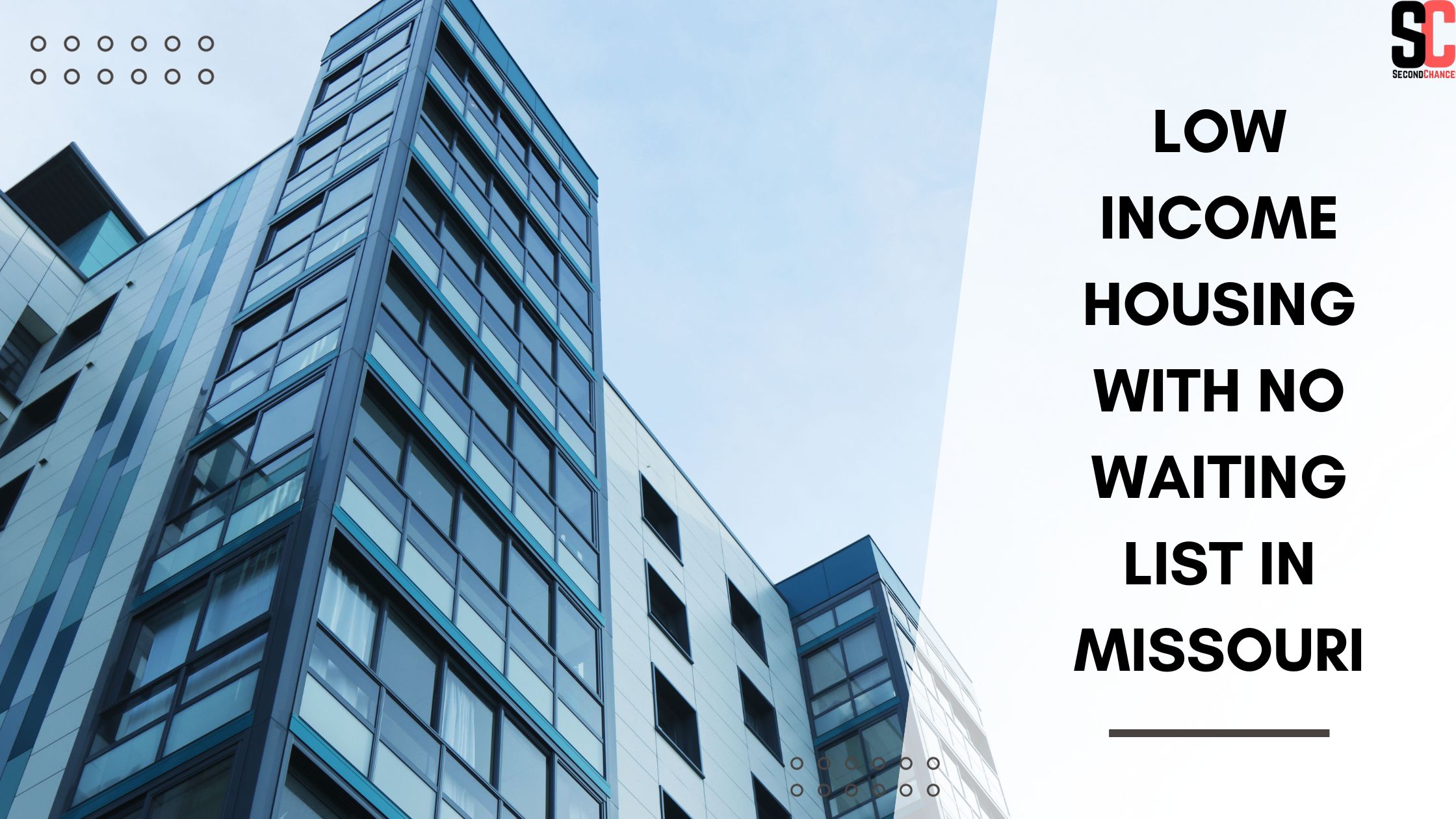Do you live in Missouri and want to know about Low Income Housing With No Waiting List In Missouri?
Here’s some great news! You can now secure your dream home without waiting lists, and you can leave frustration behind.
The availability of low-income housing in Missouri has never been greater. To locate low-income housing without the long waits, we’re here to guide you through the steps, tips, and tricks.
You can now own your own home, and it is within your reach. Discover the keys to your new home, and take the first step towards a brighter future.
Let’s get started.
Table of Contents
Explore Missouri
The state of Missouri lies in the middle of the United States. There are different types of landscapes, such as mountains and plains. It is a place where people are strong and practical. Several important cities in the Midwest, including St. Louis and Kansas City, are known for things like the Gateway Arch and jazz music. Missouri’s history is shaped by the Missouri River. In addition to farms, factories, and transportation, Missouri has a thriving economy. In Mark Twain National Forest, you can find a cool forest. Missouri has various people living in both the cities and the countryside, making it a unique place.
Top Programs For Low Income Housing With No Waiting List In Missouri?

The following options are available for Low Income Housing With No Waiting List In Missouri:
Public Housing
Housing for low-income households, seniors, and people with disabilities has been provided by public housing for over a century. Depending on the size and type of housing, public housing can vary from scattered single-family houses to high-rise apartments for elderly people. The city’s public housing units are managed by about 3,300 neighborhood associations. A local housing agency (HA) manages low-income housing for low-income residents at affordable rents with aid from the U.S. Department of Housing and Urban Development. To plan, develop, and manage these developments, HUD provides technical and professional assistance.
Eligibility Criteria
Individuals and families with low incomes are not eligible to live in public housing. Your eligibility for an HA is determined by
- Your annual income
- Whether you qualify as an elderly, disabled, or family member
- Your U.S. citizenship.
A HA will check your references if you are eligible to ensure that you and your family will be good tenants. HAs may deny admission to applicants whose habits and practices threaten the project’s environment or the habits and practices of other tenants.
HUD developed income limits for HAs. In most counties or metropolitan areas, HUD sets the lower income limit at 80%, while the very low income limit is 50% of the median income. An HA might not accept you if your income is lower than that of another HA. Income limits for your area and family size can be obtained from the HA serving your community, or they can be found online here.
Section 8 Housing Choice Voucher
A federal housing choice voucher program called the Missouri Section 8 Housing Choice Voucher Program offers rental assistance to low- and very low-income households throughout the United States of America. Housing Choice Vouchers provide low-income households with a subsidy on a portion of their rent payment so they can afford safe, decent, and sanitary housing in the private rental market. Low-income households can utilize this guide to locate and secure Section 8 housing programs.
Eligibility Criteria
Find out if you are eligible for Section 8 housing. A person must have an income below 50% of the median income in their area in order to qualify. A successful background check and proof of citizenship or legal residency are also required.
Low Income Housing Tax Credit (LIHTC)
Those who build affordable housing or renovate existing housing get tax credits through the LIHTC program. Units that are part of the LIHTC program are typically rented below market rates. As soon as the credit is approved, developers can use it every year for a decade and sell it to raise equity to construct or acquire affordable rental housing.
Eligibility Criteria
Depending on the depreciable basis and the percentage of affordable units in the development, LIHTCs are limited to a certain percentage of the Qualified Basis. LIHTC can only be applied to developments that have the following minimum number of units:
- At least 40 percent of the units must be affordable to people earning 60 percent of the area median income; or
- The number of units affordable with an income of 50 percent of the area median is 20 percent of the total number;
- There must be 40 percent of the total number of units affordable to persons with incomes ranging from 20 percent to 80 percent of the area median income, so long as the average unit designation does not exceed 60 percent.
Project-Based Section 8
More than 2 million people in 1.2 million households with low incomes now live in affordable housing thanks to Section 8 Project-Based Rental Assistance (PBRA), in which private landlords rent units in their developments to low-income renters.
Eligibility criteria
Housing authorities refer Section 8 Voucher applicants to landlords who are already on the waitlist. Vacancies for the units are filled by the landlord screening and selecting families.
How To Get Low Income Housing With No Waiting List In Missouri?
The steps below in getting your own rental space can help you skip the long waiting list and get the Low Income Housing With No Waiting List In Missouri:
Online research
You can research low-income housing near your location online by searching for answers to your questions. You can sign up for numerous websites to receive emails about available housing in your desired area.
Housing search
There are often too many people on the waiting list in big cities, and some may close due to high demand. For affordable housing in large cities, you can choose to search in smaller cities so that you can skip the long waiting list. If a city is less populated, there is a greater chance of finding affordable housing very quickly.
Contact your local Public Housing Authority
In addition to being very important, this will speed up your access to affordable housing. Whenever you have a housing issue, you can approach Public Housing Authority officials, explain the problem, and get feedback from them.
Eligibility Criteria For Low Income Housing With No Waiting List In Missouri?
The following requirements must be met in order to be considered for the Low Income Housing With No Waiting List In Missouri:
- You must show that your yearly income is within the set limits.
- Either be elderly, disabled, or a family member.
- U.S. citizenship or the right kind of immigration status is required.
A Missouri Housing Authority representative will check your references to determine if you are a good tenant and if you meet these requirements.
Required Documents For Low Income Housing With No Waiting List In Missouri?
You can apply for public housing by visiting your local Public Housing Authority (PHA) and completing an application form. Here are the details you will need to provide:
- Contact information and your current address.
- Past and present landlord information. The PHA uses this information to evaluate your rental history and suitability as a tenant.
- Your family’s annual income estimate.
- Your source of income.
- Names and addresses of your current and previous employers. Verify your income and deductions.
- To understand your financial situation, review your bank account statements.
- Your public housing unit neighbors’ names and relationships.
- Veteran status, for example, is a relevant family characteristic.
How To Apply For Low Income Housing With No Waiting List In Missouri?
Follow the given steps to apply for Low Income Housing With No Waiting List In Missouri:
Missouri Housing Authority
To start the application process for the Section 8 program in Missouri, individuals need to contact their local Housing Authority. Housing Authorities can be contacted by phone, in person, or online. Contact information for the Housing Authority in your area can be found on the official website. You will be guided through the application process by the Missouri Housing Authority, and if you’re eligible, you will be informed. You can reach the Missouri Section 8 housing program at 800-955-2232 for general information.
Complete The Application Form
In order to apply for Section 8 housing, applicants must fill out an application that asks for information such as income, rental history, and household size. Candidates may need to complete the application form online, in person, or by mail.
Submit Documents
Public housing authorities require participants to submit necessary documents such as identification proof, income verification, rental history, and criminal background check information. Depending on local housing authorities, Missouri may require specific documentation.
Interview with your local housing authority
The application form and documents must be submitted to the local housing authority before an interview can be scheduled. A Missouri Section 8 housing interview is conducted to verify the details in the application form and assess the applicant’s qualifications.
Await Approval
The local housing authority will contact you once you have completed the application process regarding the status of your application. In Missouri, the Section 8 housing program can be applied for online by low-income households.
Benefits of Low Income Housing With No Waiting List In Missouri?
There are several benefits of Low Income Housing With No Waiting List In Missouri. Some of that are given below:
Housing affordability
Providing housing vouchers makes rental costs more affordable and manageable by offering financial assistance. Program participants typically contribute around 30% of their income to rent, with the remainder covered by the program. Especially for households with fluctuating incomes, this ensures that housing expenses remain predictable and stable.
The difference between having a stable home and experiencing housing insecurity is often determined by Section 8 housing. In the absence of this assistance, they would have to spend a disproportionate amount of their income on housing needs such as food, healthcare, and education. In order to reduce financial strain and achieve economic stability, the program provides affordable housing options.
Safe and Decent Housing Conditions
A cornerstone of Section 8 housing is its commitment to maintaining safe and decent living conditions for participants. It is the responsibility of local housing authorities to conduct regular inspections of eligible housing units so they can ensure that they are meeting certain quality standards. An inspection covers several aspects of the property, such as the structural integrity, the safety features, the plumbing, the heating, and the ventilation.
The program ensures residents live in a habitable and secure environment by enforcing these quality standards. The program ensures the well-being of participants by preventing them from living in substandard or dangerous conditions. As a result of the inspections, landlords are held accountable for the condition of their properties, encouraging better property management.
Note- if you’re an Wisconsin resident and want housing assistance, you can apply for Low Income Housing With No Waiting List In Wisconsin to get various benefits.
Choices in housing
It is remarkable how flexible Section 8 housing is in terms of how participants can arrange their living arrangements. Participants can choose from several housing options if the property meets the program’s requirements, including apartments, single-family homes, townhouses, and even privately owned properties.
The flexibility of this approach enables individuals and families to find housing that meets their specific needs, taking into consideration factors like proximity to schools, jobs, and public transportation. The ability to choose housing outside designated areas further facilitates participants’ access to better job opportunities and social networks.
Stability in finances and improved quality of life
A household’s financial stability is profoundly affected by affordable housing through Section 8. As a result of reducing housing costs, families can invest more of their income in education, healthcare, and retirement savings. As a result of this financial stability, opportunities for upward mobility are created, and poverty is broken.
The stability of a participant’s housing also affects other aspects of their lives. The ability to focus on studies improves when children have a secure home to call home. Increasing earnings potential is possible for adults without worrying about housing instability. The availability of stable housing can also improve the health and well-being of the entire family.
FAQ
How can I find affordable rental housing opportunities with Low Income Housing With No Waiting List In Missouri?
There are a variety of affordable housing programs and rental assistance programs available in Missouri that allow you to locate rental housing without a waiting list. The purpose of these programs is to provide rent assistance to low-income families, individuals, and households. You should look for properties that offer supportive services along with affordable rent, ensuring that you meet the area median income requirements.
How Often Do The Income Guidelines Change?
A new set of income guidelines is usually released every year. A shift in your area’s median income level, inflation, and federal regulations can all influence changes.
How do you qualify for low income housing with no waiting list in Missouri?
Low Income – income below 80% of the Median Family Income for the area
Very Low Income – income below 50% of the Median Family Income
Extremely Low Income – income below 30% of the Median Family Income.
Those eligible for HUD programs are assessed based on their calculated net income based on these categories.
What If My Income Exceeds Limits?
You may not be eligible for Section 8 rental assistance if your income exceeds the income limits in your area. You might also consider other affordable housing options and programs, such as those offered by these programs.
What are the key factors to consider when seeking low income housing with no waiting list in Missouri?
Many rental assistance programs and affordable housing options are available when looking for low-income housing with no waiting list in Missouri. Assess your income to ensure that it is within the median income of the area.
Make sure the development you choose offers not only affordable rent but also supportive services to assist you in maintaining a stable living situation.
Conclusion
Missouri took a significant step forward in addressing its affordable housing crisis by offering low-income housing without a waiting list. This innovative approach provides immediate relief to eligible individuals and families. Streamlining processes and localizing efforts have allowed Missouri Housing Authorities to demonstrate positive change, setting a precedent for future housing initiatives.



